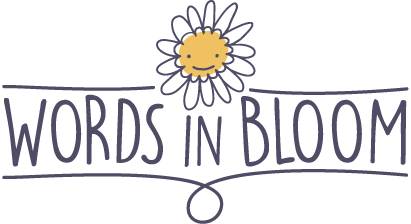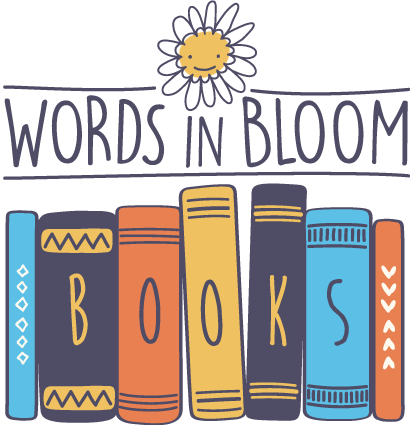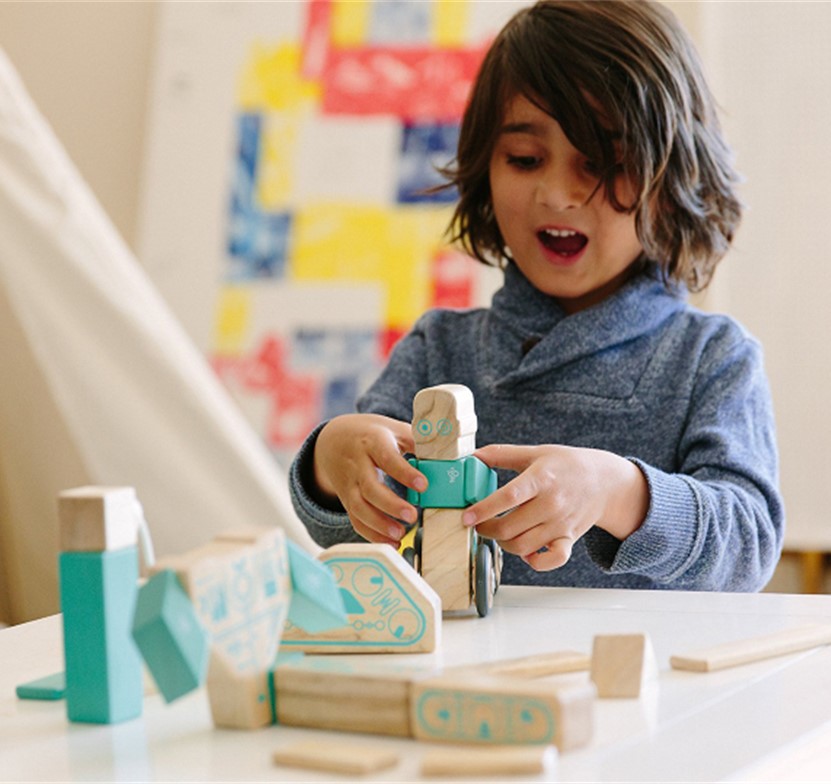
A Quick Guide to Your Child’s Speech and Language Development – 3 to 4 Years
 Speech and Language Milestones
Speech and Language Milestones
By 4 years, your child:
- follows a three-part command
- uses adult-like grammar
- asks and answers questions about “who,” “what,” “where,” “why,” and “how”
- clearly says these sounds in words: /k/, /g/, /f/, /s/, /z/, and /y/
- can be understood by strangers almost all of the time
- begins to create simple rhymes
- matches some letters with their sounds and recognizes some letters and words (like their name)
- tells stories with a clear beginning, middle and end
A referral to the Words in Bloom program may be needed if your child is not meeting most of these milestones.

Building Blocks for Developing Your Child’s Speech and Language Skills
- Speak with your child often, using complete sentences.
- Keep the conversation going by using more comments than questions.
- Emphasize the past tense (“The bear ate some honey. Then the bees chased him.”) while talking about what happened in real life or in books.
- Help your child tell you about feelings and ideas.
- Read together often. Reading is a wonderful way to build language skills and it is also a great way to spend some time together.
- Practice making faces while brushing teeth. Have your child look at your mouth as you say sounds that they may find difficult.
- Children like to help. Let your child help set the table and talk about what they are setting on the table, the different food categories or things they like or don’t like to eat.
- Be sure to give your child enough time to put their thoughts and ideas into words. Try not to rush them or interrupt them while they are formulating their sentences.
- Let your child play with other children often. Kids learn a lot of language from interacting with each other.
The Importance of Play
Play is the most enjoyable way to promote your child’s speech and language skills.
- Children love to move! Put on some music and dance around.
- Go for a walk and talk about everything you and your child see.
- Make a treasure hunt with some familiar and unfamiliar objects to build new vocabulary. Practice sentences like “I found the shovel in the sandbox!” and “The excavator is digging a tunnel.”
- Set up an obstacle course and let your child learn words like “on,” “in,” “under,” “in front,” “behind,” “high” and “low.”
- Try sensory play (sand/water/rice table, playdough, fingerpaint) and use descriptive words like “rough,” “bumpy,” “soft” and “smooth” while talking about how things feel.
 BOOKS
BOOKS
Best Book Types:
- Books with one main character, a theme, and a conclusion at the end
- Books with clear print and highlighted or bold type on certain words
- Books that let your child practice counting, tracing letters, naming letters and rhyming
Observe Your Child:
- Give your child a chance to talk about what is happening in the pictures.
- Does your child enjoy rhyming games and making up nonsense words?
- Can your child sequence a few picture cards to make up a simple story?
- Let your child be the narrator. Have them retell the story.
Opt to  Join In:
Join In:
- Ask open-ended rather than yes/no questions with books.
- Point to printed words and the pictures that go with them.
- Sing songs with rhymes and letters in them like “This Old Man,” “B-I-N-G-O,” and “The Alphabet Song.”
Keep Having Fun:
- Relate the story to your child’s experiences.
- Read with a lot of expression and animation in your voice.
- Let your child finish the story or make up a new ending.
Some Suggestions:
- I Love Trucks! by Philemon Sturges
- Are You My Mother? by P.D. Eastman
- Five Little Monkeys Jumping on the Bed by Eileen Christelow
- Dr. Seuss’s ABC by Dr. Seuss
- He Bear, She Bear by Stan and Jan Berenstain
Did You Know?
- With respect to fluency, many children will repeat whole words and phrases, but fewer will repeat or hold out individual sounds.
- By reading to your child every day, you will help to build their oral and written language skills.
- Words with consonant blends (2 to 3 consonant sounds) like “class” and “street” are often harder to pronounce and can take a little longer for your child to master.
 Frequently Asked Questions
Frequently Asked Questions
Q: My child’s voice is very loud and harsh. Is this a concern?
A: If your child’s voice is hoarse, breathy, very loud, strained, or too high/low in pitch for more than a month, talk to your child’s doctor and see a speech-language pathologist for help.
Q: My child has started stuttering when they are excited. Will this go away?
A: Many children start repeating words and phrases between the ages of 3 and 4 and this normal disfluency may go away on its own. If it lasts for more than a few months or if your child is frustrated, your child’s speech fluency should be assessed to determine if follow-up is needed.
Q: My child has trouble pronouncing many sounds in their words. Will they grow out of this once they go to school?
A: Speech sounds take many years to master, but depending on the sound, how often it occurs, and how their speech is impacted, they may need some extra help.
If you suspect your child is having difficulty communicating, don’t wait! Follow your instincts. Friendly, confidential help is only a call away.
Contact Words in Bloom by calling the EOHU at 613-933-1375 or at 1-800-267-7120.

